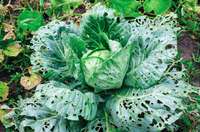
Figure 7. Snail damage on crops. Source: Andrei310 ALL RIGHTS RESERVED
ECHO’s agricultural staff often receive questions about ways to control snails naturally. Snails and slugs have rasping mouth parts that make their damage to leaves sometimes look like lace (Figure 7). They like moist, shady conditions and typically feed at night or early in the morning.
One of the best methods of controlling slugs or snails is the use of chickens or ducks which eat them. This may not be feasible though, if the fowl would also damage your crop. Other predators of snails include frogs, toads, certain birds, snakes, and certain beetles (OISAT, n.d.). Some cultural control options are to remove alternative shelter for the pests by cleaning out weeds and allowing sunlight into the lower canopy of the crop. If you have an area that is heavily infested with snails, you can try plowing the soil before or after a crop cycle to expose the pests to the sun and predators. Leaving the area without a crop for a short period of time will also remove shelter and food for them and cause them to move on to other areas (OISAT, n.d.). Snails like high organic matter so leaving lots of organic matter in your growing area may encourage snails.
Some curative control options are outlined on OISAT’s website here: http://edn.link/snailcontrol. If you try any of the ideas on OISAT’s website or have your own control ideas, please share your experience on this ECHO Conversation for others to learn about!
Advice from network members
Roger Gietzen in Haiti
Traps can work; malt beverages work well but [this approach] requires some ongoing financial support.
If you use ducks, it’s important that someone accompanies them. Otherwise, they can eat the crops. A typical farm is different than a vineyard situation [where the vineyard crop is out of the ducks’ reach]. If you use ducks, try local ducks if there are any. Otherwise, Indian Runners are likely a good breed to use for controlling snails.
If you try something like syntropic farming, eventually the system would come into ecological balance and the snails wouldn’t be as intense. But... it often gets worse before it gets better [in larger system management].
Jason Weigner in South America
It is a valid concern– leaving old organic material for snails to live and breed in. However, removing the organic material also destroys the habitat of natural snail predators as well and pest species like snails will rebound much faster than their predators. The destruction of habitat and removal of organic material is often what causes pests to reach devastating numbers. I personally leave lots of organic material and brush piles around to encourage predator species. Yes, pests [like snails] may be attracted to this but so are their predators.
I have had success letting ducks and geese range through crops since they generally love to eat snails (although it depends on the size and species of the snail). I found ducks are much better at leaving crops alone than chickens, unless the crops are still very young or produce fruit they eat. Cayuga, Khaki Campbell, Swedish Blue, and Indian Runner ducks have all worked well for me. I would not recommend Muscovy Ducks however as they have a tendency to dig up or mash crops more than other ducks.
Identifying what species of snail you are dealing with might help in control methods and understanding its lifecycle. If it is a native snail, there may be a native predator that could be encouraged to help keep them under control (I know some people hate snakes but small species often eat snails). A lot of small species of snakes like snails. We have a species that specializes in only eating snails! We also have one that only eats slugs.

Figure 8. Pitfall trap made from a plastic water bottle painted yellow to attract insects. Source: Tim Motis
When I lived in Washington State I had success putting pitfall traps (Figure 8) around gardens with a yeast/sugar/water mixture that is usually irresistible to snails and slugs. It needs to be deep enough so they drown when they fall in and changed frequently, so this might not be practical if you are trying to control them over a large area. I have used plastic tubs to catch slugs and snails. I’ve never seen so many slugs in my life! I would catch them by the hundreds every night. They just have to be deep enough to fall into the yeast mixture and drown. Some people use malt beverages but I find the yeast mixture works best. If they are a large species, going out at night with a flashlight, especially on a wet night, and removing them by hand can help keep populations under control.
How to make a baited pitfall trap for snails or slugs
Yeast solution in a pitfall trap for snail or slug control (OISAT, n.d.):
You will need yeast, water, containers, and a shovel.
- Dissolve 15 g of yeast per 100 ml of water. *
- Bury containers in the soil to the rim so that the top of each container is level with the ground (a pitfall trap).
- Fill the containers with the solution so that it is deep enough for slugs/snail species to drown in the liquid portion.
- Check the containers frequently, especially after it has rained.
- Change the solution when needed.
*You can optionally add sugar at a rate of 1.5 g per 100 ml. Make sure the water is warm so that you can dissolve the sugar.
Reference
OISAT. n.d. “Slugs.” Online Information Service for Non-Chemical Pest Management in the Tropics. PAN Germany